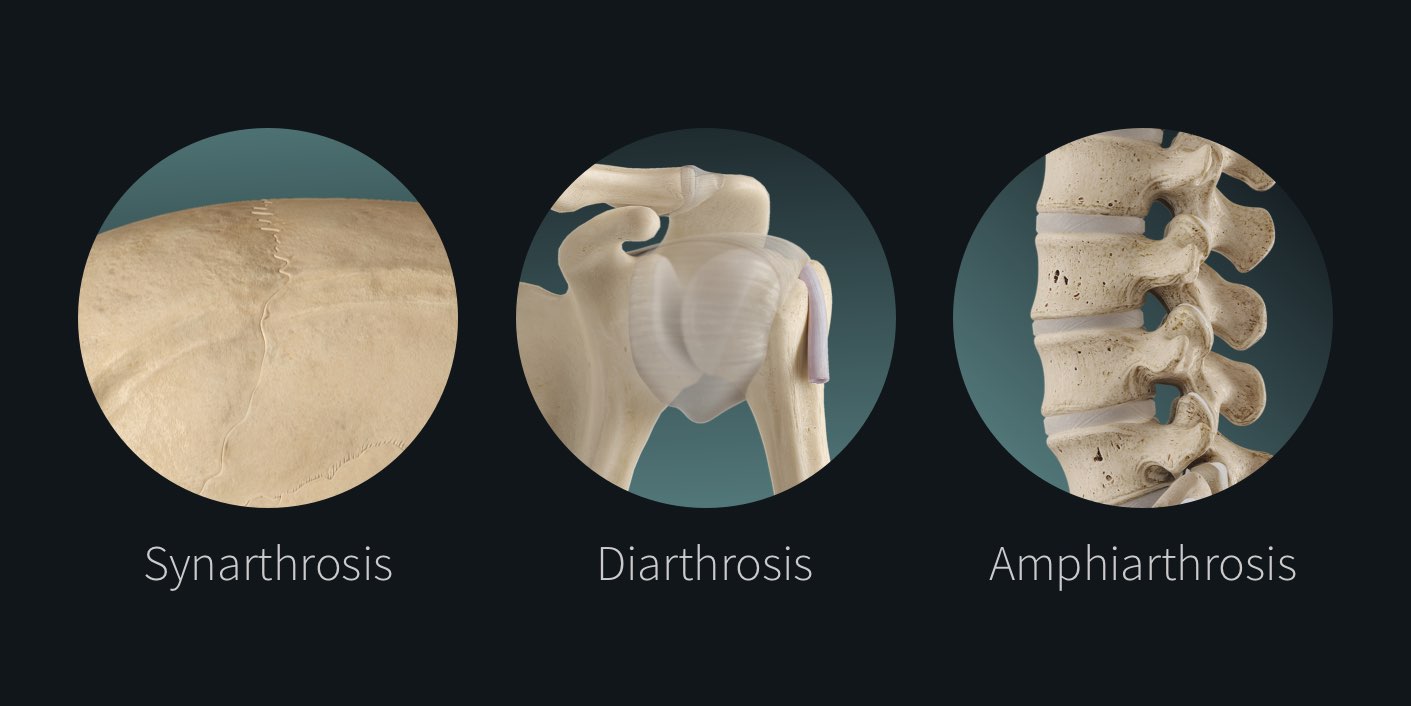
On average, do you know how many joints there are in the human body?
Joints are regions of the human skeleton where two or more bones meet and articulate. On average, there are about 360 joints in the human body and these joints are classified based on the surrounding soft tissue structures ?️(structural classification) or their range of movements ??(functional classification).

Structural Classification:
This is based on how the bones are held together by connective tissue and articulate with each other. At fibrous joints, the adjacent bones are directly united to each other by fibrous connective tissue. Similarly, at cartilaginous joints, the adjacent bones are united by cartilage. In contrast, at a synovial joint, the articulating bone surfaces are not directly united to each other, but come together at a fluid-filled joint cavity filled with lubricating fluid called synovial fluid.

Functional Classification:
This is determined by the amount of movement each joint in this category provides. They are classified as immovable ⛰️(synarthrosis), slightly moveable ?(amphiarthrosis) and freely moveable ?️(diarthrosis).

The blood supply to joints is generally restricted. Movement is key to promoting the flow of blood to the connective tissue within the joints, and without it, the shock absorbing capacity of joints begin to diminish ?This also weakens supporting ligaments and muscles leading to pain and stiffness.
Joint pain can rob us of some of life’s simple pleasures like walking the dog, gardening or playing sports as a hobby. Some of the common causes of joint pain include arthritis, trauma, aging and inactivity. It can be very tempting to avoid movements that cause pain, however, limiting movements can worsen an already poor situation.
Here is the good news ?The right exercise, performed the right way can provide long-lasting relief from ankle, shoulder or knee pain. The ultimate goal is to perform gentle, targeted joint workouts with a simple routine. What are we waiting for, let’s get moving!! ??♀️?♀️????
Study the joints like you’ve never seen them before in Complete Anatomy 2020. Explore the intricate textures and medical accuracy of our skeletal and connective systems, or set the joints in motion with over 1000 orthopedic and fitness videos. Try it for free today with a 3-day trial.
